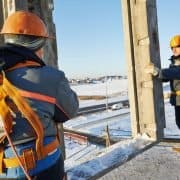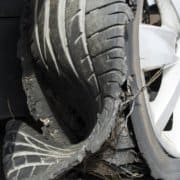Day-to-day work around the farm doesn’t have to be painful
Here are some tips to avoid injury by evaluating activities and preparing for them
Farmers take their aches and pains as part of their work, but it doesn’t have to be that way.
Understanding factors that contribute to on-farm injury can be a start to reducing risk of getting hurt.
Why it matters: Farmers are busy, especially in certain seasons of the year, so reducing risk of injury when they need to be at their physical best can have important farm business implications.
Julie Anceriz, Syngenta Canada’s territory health and safety manager, told a recent Whole Farm Health seminar put on by the Ag Women’s Network, that there are ergonomic factors that affect risk of injury no matter what type of work one does, whether sedentary at an office chair or in a combine or tractor, or active, lifting and doing heavy work.
Cumulative trauma and injury are significantly different from acute injuries.
Cumulative trauma happens when there’s excessive wear and tear on small body parts. The result is overuse injury to tendons and nerves. The body doesn’t have enough time to rest, reduce swelling and decrease the pain.
Acute injuries include strains and sprains, which happen when there is a single forceful event.
It’s also useful to know the differences between strains and sprains, said Anceriz. A strain is the stretching or tearing of a tendon, which attaches muscle to bone. It has blood supply and therefore will heal quicker.
Sprains involve ligaments, lack blood supply, and take longer to heal.
Back pain is the top ergonomic injury in farming. Managing the risk factors, can limit the chance of injury.
There are four key risk factors that lead to most injuries that come from movement or a lack of a range of movements:
- Repetition
- Excessive force
- Awkward position
- Contact stress
Repetition tasks are those that are done over and over again. Anceriz said examples are hoeing manure from stalls, milking cows or picking fruit.
“Why you experience pain is that you haven’t given your body time to heal,” she said.
Excessive force occurs when high force loads impact the body. This could include lifting seed bags or hay bales, along with wrangling animals.
Sustained awkward positions also pose a risk of injury. This can include picking berries, or shearing sheep.
Contact stress is the kind of activity that leads to carpal tunnel syndrome. When force is concentrated on a small area of the body, there’s pinching or crushing of tissue that causes discomfort and pain. Carrying pails, is an example, as is kneeling.
Once you know your major risk factors, you can take actions to mitigate the stress.
There are simple and easy ways to stretch and move, even if you’re confined to an office chair or a tractor seat including:
Micromovements help get blood flowing to parts of the body that aren’t being used, reducing the potential of aches.
“Micromovements when you are sitting in these machines are crucial,” said Anceriz. Pull your shoulders back to open up your chest instead of spending the day with your chest closed with your hands on a steering wheel or in front of a computer.
“Squeeze your butt cheeks,” she said. It will increase blood flow and brings more oxygen to joints and the body.
Take a break. Step out of the combine and move your arms and legs. Warming up muscles will keep them from aching or being injured, she said.
Physical acclimatization can help reduce injuries when you are getting ready to start a new task. Syngenta finds that getting summer students to do some exercises is helpful to avoid injury as they move from studying and writing exams, to doing physical work.
People get their beach body ready before going on a trip to the beach. Anceriz said that you need to prepare your “ag body”. Start getting ready physically for planting season instead of just jumping into it when the land is dry and warm. If you work hard physically in the summer, some strength training in the off season can help avoid injuries, she said.
Source: Farmtario. Author: Editor.









